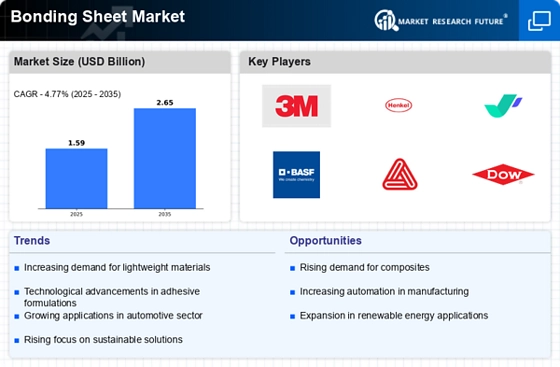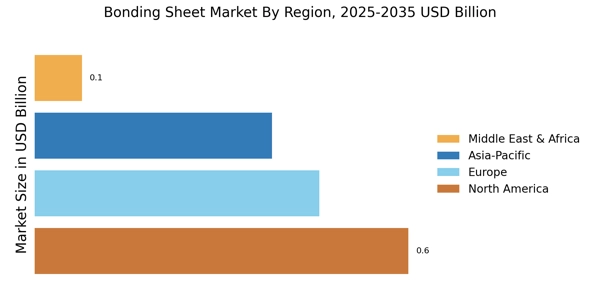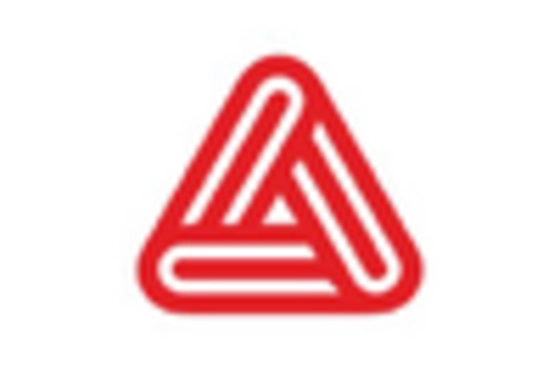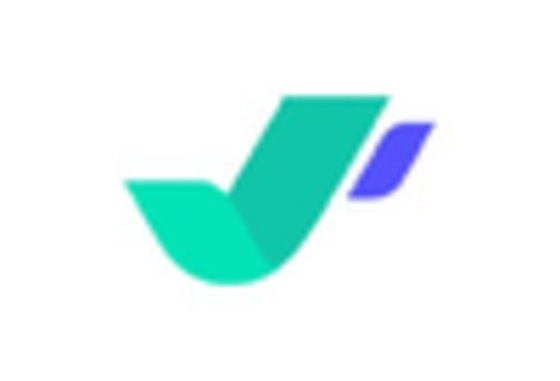Growth in Construction Activities
The Bonding Sheet Market is poised for expansion, fueled by the resurgence of construction activities across various regions. As urbanization accelerates, the demand for high-performance bonding solutions in construction applications is increasing. Bonding sheets are utilized in a myriad of construction projects, including roofing, flooring, and wall systems, due to their superior adhesion properties and durability. Recent data indicates that the construction sector is expected to grow at a compound annual growth rate of around 5% over the next few years, which bodes well for the bonding sheet market. Additionally, the trend towards sustainable building practices is likely to further enhance the demand for eco-friendly bonding sheets, aligning with the industry's shift towards greener solutions. Thus, the construction sector's growth trajectory is a pivotal driver for the Bonding Sheet Market.
Rising Demand in Automotive Sector
The Bonding Sheet Market is experiencing a notable surge in demand, particularly from the automotive sector. As manufacturers increasingly prioritize lightweight materials to enhance fuel efficiency and reduce emissions, bonding sheets are becoming essential. The automotive industry is projected to account for a significant share of the bonding sheet market, with estimates suggesting a growth rate of approximately 6% annually. This trend is driven by the need for durable and reliable bonding solutions that can withstand the rigors of automotive applications. Furthermore, the integration of advanced bonding sheets in electric vehicles is likely to propel market growth, as these vehicles require innovative materials to optimize performance and safety. Consequently, the automotive sector's evolving requirements are shaping the landscape of the Bonding Sheet Market.
Increased Focus on Renewable Energy Solutions
The Bonding Sheet Market is witnessing a shift driven by the increasing focus on renewable energy solutions. As the world transitions towards sustainable energy sources, the demand for bonding sheets in solar panel manufacturing and wind turbine construction is on the rise. Bonding sheets play a crucial role in ensuring the structural integrity and efficiency of renewable energy systems. Recent projections indicate that the renewable energy sector is expected to grow at a compound annual growth rate of over 8%, which will likely bolster the bonding sheet market. Additionally, the push for energy-efficient solutions in various industries is further propelling the demand for high-quality bonding sheets. Consequently, the emphasis on renewable energy is emerging as a vital driver for the Bonding Sheet Market.
Technological Innovations in Material Science
Technological advancements in material science are significantly influencing the Bonding Sheet Market. Innovations such as the development of high-performance adhesives and advanced composite materials are enhancing the functionality and application range of bonding sheets. These innovations are not only improving adhesion properties but also increasing resistance to environmental factors, thereby extending the lifespan of bonded materials. Market data suggests that the introduction of smart bonding sheets, which can adapt to varying conditions, is likely to create new opportunities within the industry. Furthermore, the integration of nanotechnology in bonding sheet production is expected to yield products with superior performance characteristics. As a result, the ongoing technological innovations are anticipated to drive growth and diversification in the Bonding Sheet Market.
Expansion of Electronics and Consumer Goods Sectors
The Bonding Sheet Market is benefiting from the expansion of the electronics and consumer goods sectors. As technology continues to evolve, the demand for lightweight and durable materials in electronic devices is increasing. Bonding sheets are essential in the assembly of various electronic products, providing reliable adhesion and enhancing product longevity. Market analysis indicates that the electronics sector is projected to grow at a rate of approximately 7% annually, which is likely to drive the demand for bonding sheets. Furthermore, the rise of smart devices and wearables is creating new applications for bonding sheets, as manufacturers seek innovative solutions to meet consumer expectations. Thus, the growth of the electronics and consumer goods sectors is a significant driver for the Bonding Sheet Market.


















Leave a Comment